Contraceptive and Harmful Antibiotics Found in Top Ten Fast Food Samples
Moms Across America’s Report on America’s Most Popular Fast Food
by Zen Honeycutt
Moms Across America requested that the top ten most popular fast food brand meal samples be tested for 104 of the most commonly used veterinary drugs and hormones. Due to large, industry, confined animal feeding operation conditions, which include extremely close quarters, unsanitary spaces, and high incidence of disease, most of America’s nonorganic meat comes from livestock that is heavily treated with antibiotics, growth hormones, and an anti-parasitic which is also a known aviary contraceptive.
Full lab report for Fast Food Testing of Veterinary drugs and hormones
Fast food is consumed by eight-five million Americans each day, and many chains are the primary suppliers of many school lunches. Thirty million school meals are served to our children each day, and for millions of underprivileged children, these toxic meals are their only access to nutrition. Previous testing has shown that America’s school lunches are, indeed, toxic.
To further investigate the status of a major source of food and nutrition for children as well as adults in America, Moms Across America and its supporters commissioned, with support from Children’s Health Defense and the Centner Academy, extensive testing on 21 of the country’s most popular fast food brands. The 21 brands include the top 20, as rated by the QSR50, as well as In-N-Out Burger, which came in as #33 but was included in the testing because of its frequent claims to be a “healthier” version of fast food). In all, forty-two samples of fast food meals gathered from 21 locations nationwide were tested by the Health Research Institute. The brands were tested for veterinary drugs and hormones, glyphosate and pesticides, heavy metals, phthalates, PFAS, minerals, vitamins, and calories. This report is a portion of the testing program showing the veterinary drugs and hormones results in the top ten brands: McDonald's, Starbucks, Chick-fil-A, TacoBell, Wendy's, Dunkin' Donuts, Burger King, Subway, Domino's and Chipotle.
Collectively, their annual gross sales were $134,308,000,000, with for example, the 2017 salary for the CEO of McDonald's making $21.8 million ($1.8 million a month). The average fast-food server makes about $25,620 per year ($2,135 per month).
Healthcare costs from consistently consuming food with toxins that harm human health are incalculable. But the average American health care costs are rising. The United States spends more on health care than any other country. Annual health expenditures stood at over 4.2 trillion U.S. dollars in 2021, and personal health care expenditure equaled 10,784 U.S. dollars per resident.
Moms Across America asserts we are paying a high price to eat toxic food no matter how cheap the meal costs.
Summary of Test Results
Three veterinary drugs and hormones were found in ten fast food samples tested.
One sample from Chick-fil-A contained a contraceptive and antiparasitic called Nicarbazin, which has been prohibited.
Six out of ten, or 60%, of the fast food samples contained antibiotic Monesin, which is not approved by the FDA for human use and has been shown to cause severe harm when consumed by humans.
Four out of ten, 40% of the samples contained antibiotic Narasin, which has been shown, in animal studies, to cause anorexia, diarrhea, dyspnea, depression, ataxia, recumbency, and death and pathologically by degeneration, necrosis, and repair of heart and skeletal muscles.
Monensin and Narasin are antibiotic Ionophores; toxic to horses and dogs at extremely low levels, leaving their hind legs dysfunctional.
Ionophores cause weight gain in beef and dairy cattle and are therefore widely used but also “cause acute cardiac rhabdomyocyte degeneration and necrosis.”
For many years, ionophores have also been used to control coccidiosis in poultry. However, misuse of ionophores can cause toxicity with significant clinical symptoms. Studies show that ionophore toxicity mainly affects myocardial and skeletal muscle cells.
Only Chipotle and Subway had no detectable levels of veterinary drugs and hormones.
Side Effects of Chemicals Detected in Popular Fast Food
Monensin - toxicity side effects in animals: anorexia (24 to 36 h post-ingestion), diarrhea, dullness, weakness, ataxia, dyspnea, prostration, and death
Narasin - toxicity side effects in animals: anorexia, diarrhea, dyspnea, depression, ataxia, recumbency, and death and pathologically by degeneration, necrosis, and repair of heart and skeletal muscles.
Nicarbazin - infertility in poultry, geese, and pigeons. It can also cause increased sensitivity to heat stress, growth depression, death, cell degeneration processes in the liver and kidneys; it occasionally causes toxic effects in laying hens, reduced hatchability, and interruption of egg-laying.
Monensin and Narasin
While some ionophores, such as quercetin and hydroxychloroquine, both zinc ionophores, can be beneficial, antibiotic ionophores are not. Moms Across America is gravely concerned about our population, especially children, unknowingly eating unprescribed antibiotic ionophores livestock, even at low levels, consistently because of potential damage to the microbiome as well as the risk of antibiotic-resistant bacteria growth.
We question if the side effects of these ionophores in dogs and horses, leaving their hind legs dysfunctional, might be related to millions of Americans presenting with restless leg syndrome and neuropathy, conditions unknown to most humans just a generation or two ago. Further testing must be conducted on the side effects of these drugs in our food and the effects on humans. Until proven safe, we urge our regulatory agencies, such as the USDA and FDA, to disallow the use of these drugs in our livestock.
Animal studies show serious harm:
Cardiovascular System and Lymphatic Vessels
From ScienceDirect.com
Lisa M. Miller, Arnon Gal, in Pathologic Basis of Veterinary Disease (Sixth Edition), 2017
Ionophores (polyether antibiotics), such as monensin, lasalocid, salinomycin, and narasin, are toxic to horses and dogs at extremely low concentrations. They are used as feed additives to increase beef and dairy cattle's feed efficiency and weight gain and control coccidiosis in poultry. Horses gain access to ionophores when they consume (1) ruminant feed containing ionophores; (2) horse feed accidentally mixed with ionophores; and (3) horse and dog food accidentally contaminated in a mill producing poultry, cattle, horse, and dog feeds. Ionophores cause acute cardiac rhabdomyocyte degeneration and necrosis; this type of injury is discussed in detail in the section on Responses to Injury: Myocardium, Myocardial Necrosis. Ionophores are lipophilic chelating agents that transport cations across phospholipid bilayer membranes and complexes with monovalent cations, such as Na+ and Ca+, and cross cell membranes and enter the cell via ion transport systems in exchange for H+ and K+ ions. Increases in the concentrations of intracellular Ca+ and possibly Na+ are thought to cause cell membrane injury and dysfunction, resulting in mitochondrial swelling and decreased adenosine triphosphate production. In addition, they cause lipid peroxidation of cell membranes, leading to loss of cell membrane integrity, fluid and ion shifts, and oncotic necrosis.
Ionophore toxicity can lead to anorexia, diarrhea, dyspnea, depression, ataxia, recumbency, and death and pathologically by degeneration, necrosis, and repair of heart and skeletal muscles.
A concerning contraceptive (for geese and pigeons) and antiparasitic called Nicarbazin, prohibited after many years of use, was found in the Chick fil-A sandwich samples. Nicarbazin is used to treat coccidiosis, a parasitic disease of the intestinal tract of animals, commonly meat bird chickens, caused by coccidian protozoa. The disease spreads from one animal to another by contact with infected feces or ingesting infected tissue. Nicarbazin cannot be used in egg-laying chicken feed because it prevents the production of eggs. A 2005 study reports the use of Nicarbazin has been prohibited.
V. Hagren, ... T. Lovgren, in Food Safety Control in the Poultry Industry, 2005
Nicarbazin, an equimolar mixture of 4,4'-dinitrocarbanilide (DNC) and 2-hydroxy-4,6-dimethylpyrimidine (HDP), belongs to the group of carbanilides. The marker residue for Nicarbazin is DNC since it is not so rapidly metabolized as HDP. Nicarbazin has coccidiocidal and coccidiostatic effects. The Joint FAO/WHO Expert Committee (JECFA) has established an MRL of 200 μg per kg for chicken liver. Nicarbazin has been on the market for decades, but recently, the use of Nicarbazin, as such, was prohibited due to incomplete toxicological data (Anon., 2001b).
Moms Across America is deeply concerned about allowing Nicarbazin in livestock production.
In January of 2023 many back yard growers reported that their chickens were not laying eggs and pointed to the animal feed. Moms Across America questions if that feed for egg layers was contaminated with feed for meat birds, or with a toxin/contraceptive, rendering the egg layers infertile.
The Executive Director, Zen Honeycutt states: “The impact of millions of Americans, especially children and young adults, consuming a known animal contraceptive daily is concerning. With infertility problems on the rise, the reproductive health of this generation is front and center for us, in light of these results.”
In addition, an EPA Nicarbazin label restriction, “Do not apply within 20 feet of any body of water, including lakes, ponds or rivers.” is required for this product. Moms Across America questions - if Nicarbazin is unsafe to apply to animal feed within 20 feet of waterways, and the human body is made up of 60% water, how is it safe for humans to consume via fast food?
It is not uncommon for millions of Americans to consume fast food for breakfast, lunch or dinner, or all three meals, every day. According to school lunch director reports, school lunches are often provided by fast food suppliers and typically are the only meals underprivileged children receive and a major component of the food consumed by most children.
One thing is certain: long-term exposure to antibiotics and hormones in foods can cause serious health problems like antibiotic resistance, the rise of superbugs, death, heart problems, memory decline, and infertility.
From a January 2023 Vox article by Kenny Torella:
“In a concerning course reversal, antibiotic sales for use in livestock ticked back up 7 percent from 2017 to 2021, per a new FDA report. The chicken industry, which had led the pack in reducing antibiotic use on farms, bought 12 percent more antibiotics in 2021 than in 2020.”
It’s a sobering turn of events with life-and-death implications. In 2019, antibiotic-resistant bacteria directly killed over 1.2 million people, including 35,000 Americans, and more than 3 million others died from diseases where antibiotic resistance played a role — far more than the global toll of HIV/AIDS or malaria, leading the World Health Organization to call antibiotic resistance “one of the biggest threats to global health, food security, and development today.”
Exposure to hormones from consuming Concentrated Animal Feeding Operations (CAFOs) livestock could be linked to the early onset of puberty, miscarriages, increasing incidence of twin births, and reproductive problems. Opponents of hormone use suggest that these hormones are linked to cancers, such as breast and uterine cancer, reproductive issues, and developmental problems in children. Children who experience developmental or hormone disruption issues are more likely to experience mental health issues, which could lead to violence. In addition to costly and debilitating physical health issues, Moms Across America is gravely concerned about the rise in violence and mass/school shootings in connection with the rise in mental health issues. We believe the rise in violence could be reversed with proper nutrition and the reduction of exposure to toxic chemicals in the food and environment.
Moms Across America advocates for non toxic regenerative organic and pasture-raised livestock practices, and the return of the small local farmers. A congressional briefing to discuss food toxicity will take place in Washington DC on octubre 17, 2023 from 9-10:30am in the Hart Senate Office Building, Room SH-902. The briefing is hosted by Senator Cory Booker (D-NJ), a member of the Senate Committee on Agriculture, Nutrition, and Forestry.
Further fast food results are pending release.
Moms Across America is a national coalition of Unstoppable Moms whose mission is to educate and empower mothers and others with actions and solutions to create healthy communities.


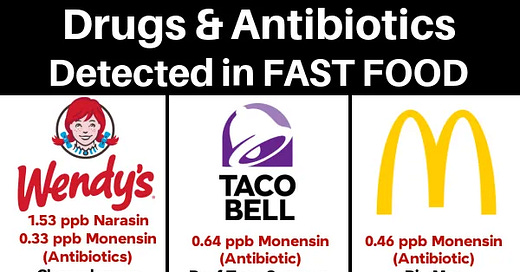


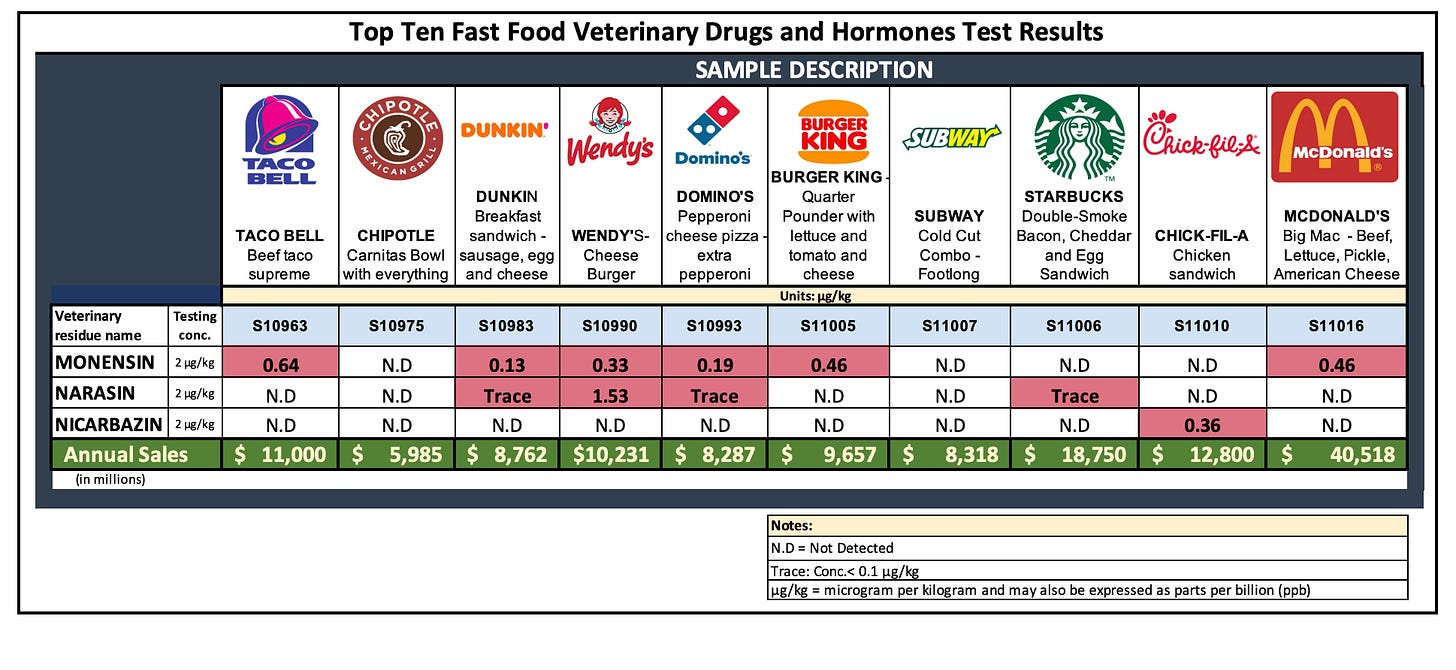
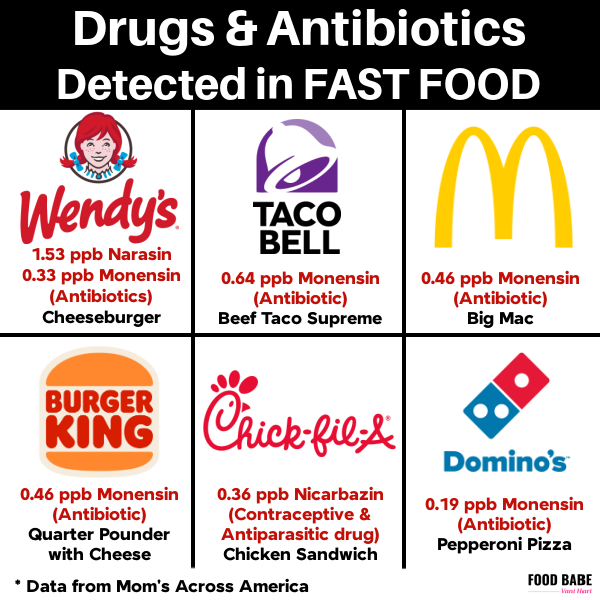
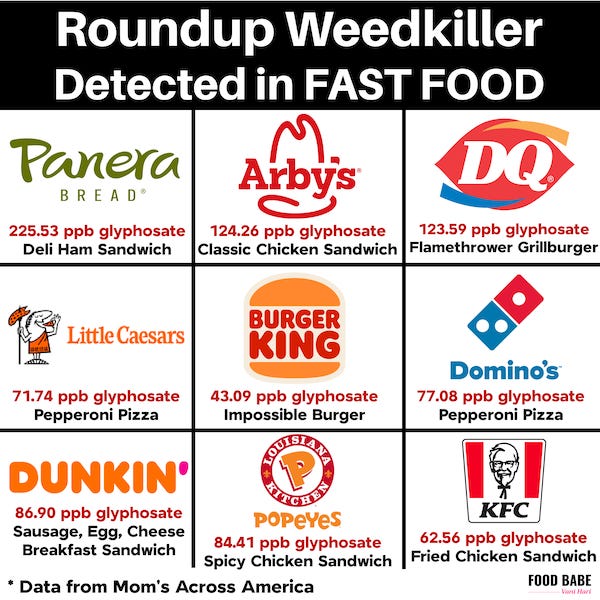
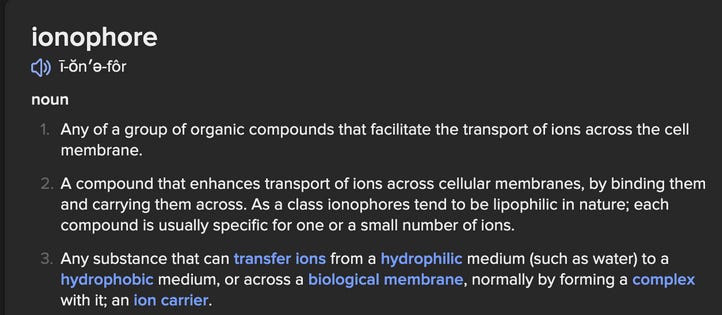

FYI... that don't even scratch the surface.
Kraft, Pepsi, and Nestle Using Aborted Babies For Flavor Additives
https://stillnessinthestorm.com/2019/10/kraft-pepsi-and-nestle-using-aborted-babies-for-flavor-additives-dr-rich-swier/
And I haven't even started about the NEURAL LACE programmable Nanotech inside the Vxx Jabs.
NEURAL LACE is a BCI Brain Computer Interface... designed to hook up Humanity to AI the Machine learning God.
This Technology was created by non other than Elon Musk & Knlaus Schwab Darpa CIA and the Harvard Wyss foundation that relates to Klaus Schwab Hansjörg Wyss and Chelsea Football club.
And I didn't even mention STARLINK.
PLUS
The aim of covid is and was Genetically Targeted Biological Warfare.
Dr. Robert Malone is CIA
And now get this:
It has been revealed that Annastacia Palaszczuk's father is the head of a gene-data storage and sequencing organisation, shining further light on ulterior motives for COVID-19 testing.
https://tottnews.com/2021/01/21/qld-premier-father-genetic-company/
And this alone reveals the privatized Fascism we are experiencing now.
Government corruption at the highest level.
Privatized Fascism... WEF